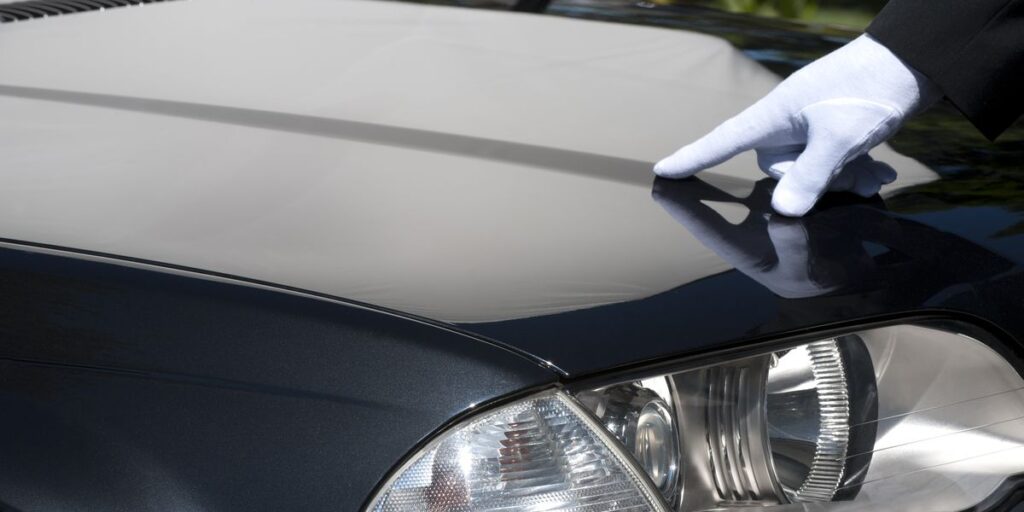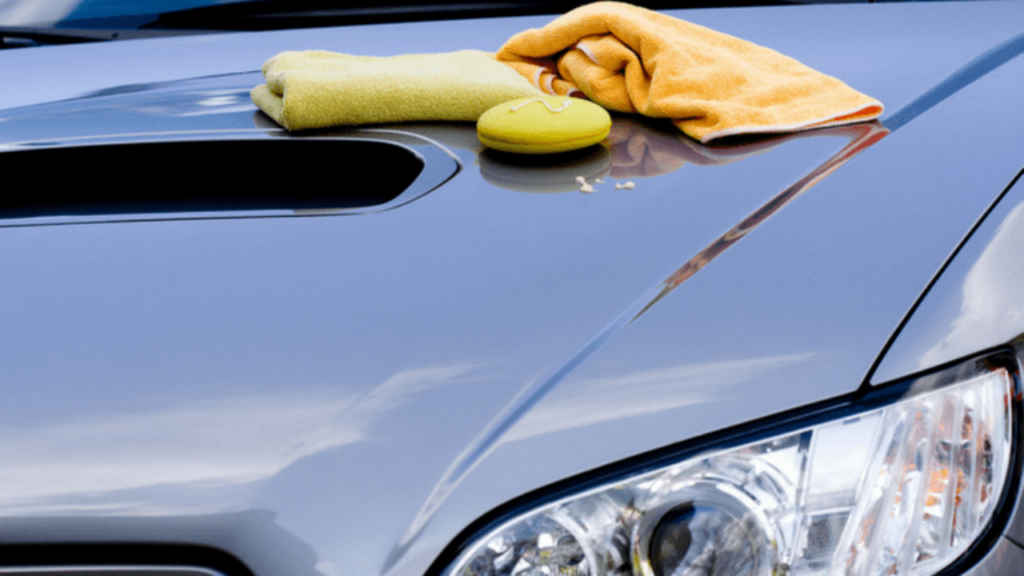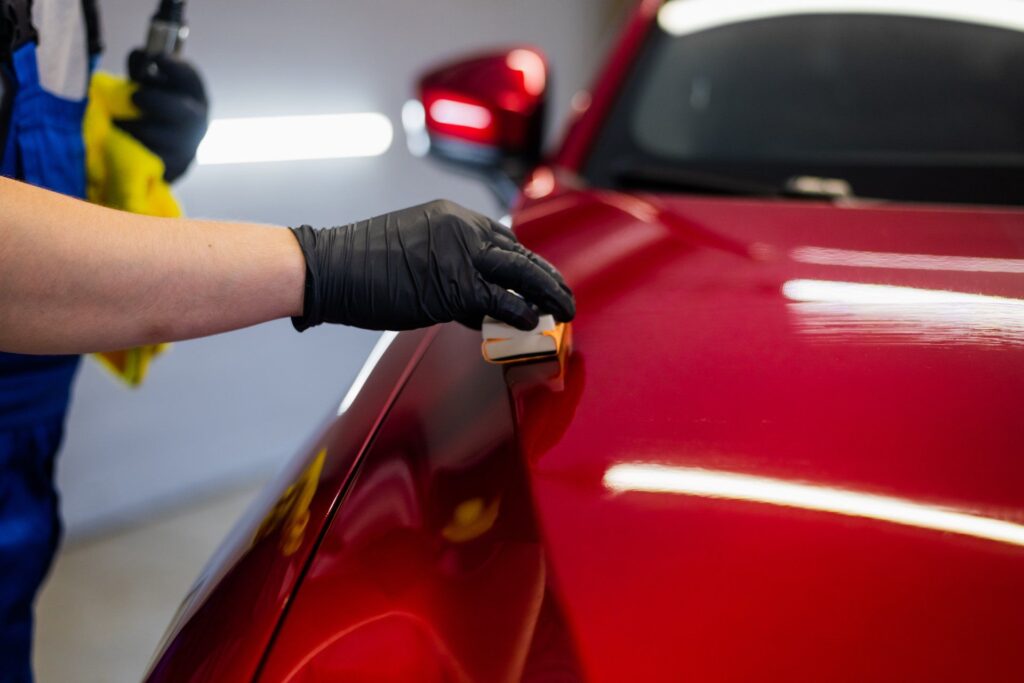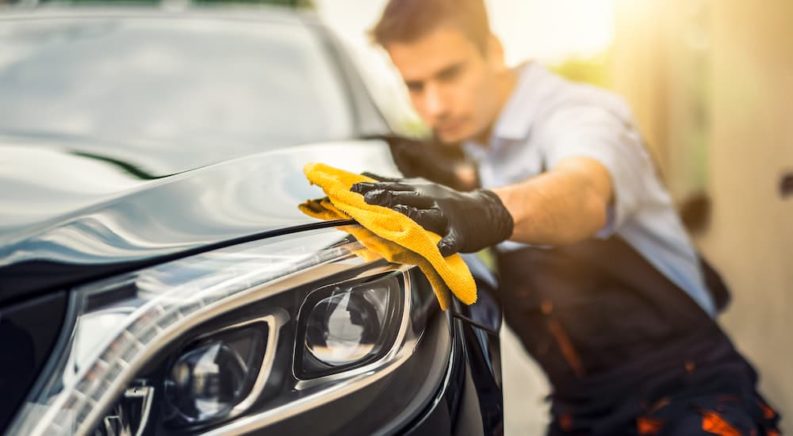Adding a mirror-like finish over your car’s paint while protecting its exterior can have numerous benefits. By protecting your car’s exterior, you can ensure it remains visually appealing and functional.
To do this, you may turn to a car sealant to help you get the job done. There is a variety of brands and types of car sealant on the market, each one offering its own unique protective capabilities, material composition, and visual style. Car paint sealants can work, and when you understand their advantages and limitations, you can choose one that works best for you and your car.
Page Contents
What is a Sealant?

A car sealant, also known as a car paint sealant, is a synthetic product that protects the paint and the exterior of a car from harsh environmental elements. In addition to achieving this, they also create an attractively glossy finish to vehicles as well. Since sealants are synthetic, they are manufactured to adhere to car surfaces, so they do provide a high degree of longevity and superior performance. For this reason, sealants are commonly used by car detailing professionals all over the world.
Benefits of Using a Sealant
As previously mentioned, there are many benefits to using car sealants, including:

- Beautiful Shine: Applying a car sealant on a vehicle can result in a beautiful, glossy shine. This attractive finish can make your car more appealing to the eye and give it a modern and updated appearance.
- Ease of Use: Car sealant is extremely easy to use. Simply apply the sealant to an applicator and allow it to spread an even layer across your vehicle’s surface. Some machines can also apply the sealant for you, making the process even faster and more efficient.
- Paint Protection: Countless contaminants with acidic properties, such as bird droppings and bug splatters, can damage the exterior of your car. Car sealant protects your vehicle from these contaminants, as well as from the effects of water. This protection allows your vehicle’s paint coat to retain its quality and integrity.
- Durability: Under the right circumstances, car sealants can provide protection for up to a year. Since the protection of a sealant is long-lasting, you don’t have to worry about replacing it month after month.
- Lower Maintenance Costs: Car sealants provide a great deal of protection, so there is little to no need to worry about having to spend significant amounts of money maintaining your vehicle regularly.
- High Resistance: Paint sealant is highly resistant, so hardly any hazardous materials can remove the sealant from the surface of your vehicle once it is applied. This high resistance adds an extra layer of protection to your vehicle.
Types of Car Exterior Sealants
The use of car exterior sealants helps protect cars from the elements such as ultraviolet radiation, road salt, dirt, grime, and more. There are various types of car sealants available to serve a variety of needs. It is important that you select the right product for your vehicle’s specific needs.
Waxes
Waxes are made up of carnauba or a synthetic polymer that provides gloss and protection against UV rays. Waxing is generally easier than other forms of protection, but it does not last as long – usually about three months for Carnauba wax.
Silicone Polymer
These are flexible synthetics made up primarily of silicon hydroxide or silicon resin with micro fine particles. They provide resistance from both water and heat and can last several months with proper maintenance.
Polymer Sealants
These typically come in aerosol cans and create a durable coating on the car that helps keep out contaminants like road salt and grime along with providing protection from the sun’s UV rays for 6-12 months depending on usage conditions.
Inorganic Sealants
Also called “paint sealers”, these provide longer-lasting protection than traditional waxes because they fuse together with the paint to make a stronger coating against dirt, oil and weathering elements at far greater lengths than conventional wax – typically lasting up to two years depending on usage conditions.
These are just some examples of different types of car exterior sealants available in today’s marketplace; other products may also be available based on manufacturer preferences or local availability so it is always wise to ask around before making any purchases or decisions regarding car care products!
Tips for Applying Car Exterior Sealants
To ensure optimum protection, here are some tips for how to apply exterior paint sealants.

- Start by cleaning the surface thoroughly, removing dirt, debris, or other contaminants. Make sure you don’t use any aggressive cleaners or polish that might actually damage the paint finish after it has been applied.
- Apply a thin layer of the product using either a foam applicator or a soft cloth in circular movements until you have covered the entire area you wish to protect. Make sure you don’t use too much; a little goes a long way!
- Allow your sealant application to dry for approximately 15-20 minutes until it becomes hazy and hardens on the surface before buffing it away with a microfiber towel for the best results. Use circular motions when buffing and move from top down so any excess product will fall off naturally; otherwise, particles of material can become embedded in neighboring areas due to dust particles contaminating the environment when wiping in other directions, which could lead to scratching.
- Once done with buffing, apply another coat if necessary, following each one with additional drying time. This will give greater longevity as well as protection against more persistent contaminants like bird droppings and acid rain. Plus, remember that these products last anywhere from 3 months up to 12 months, so depending on what frequency you would like your vehicle to be protected, allow that periodicity when applying.
- Finally, top everything off with one final glass wax application. This will provide further protection against insect smears, and dirt, as well as add additional sheen. Finish by buffing out any residue with a soft cloth; this step, although optional, can really make all difference in terms elegance and look of your automobile.
Conclusion
In order to keep your car’s exterior looking its best, a sealant is an important part of any maintenance routine. Sealants form a protective barrier on the paint and prevent dirt, grime, and pollutants from making contact with the finish. There are many types of sealant to choose from, so be sure to read the labels carefully in order to ensure that you find one that works for your car’s needs.






